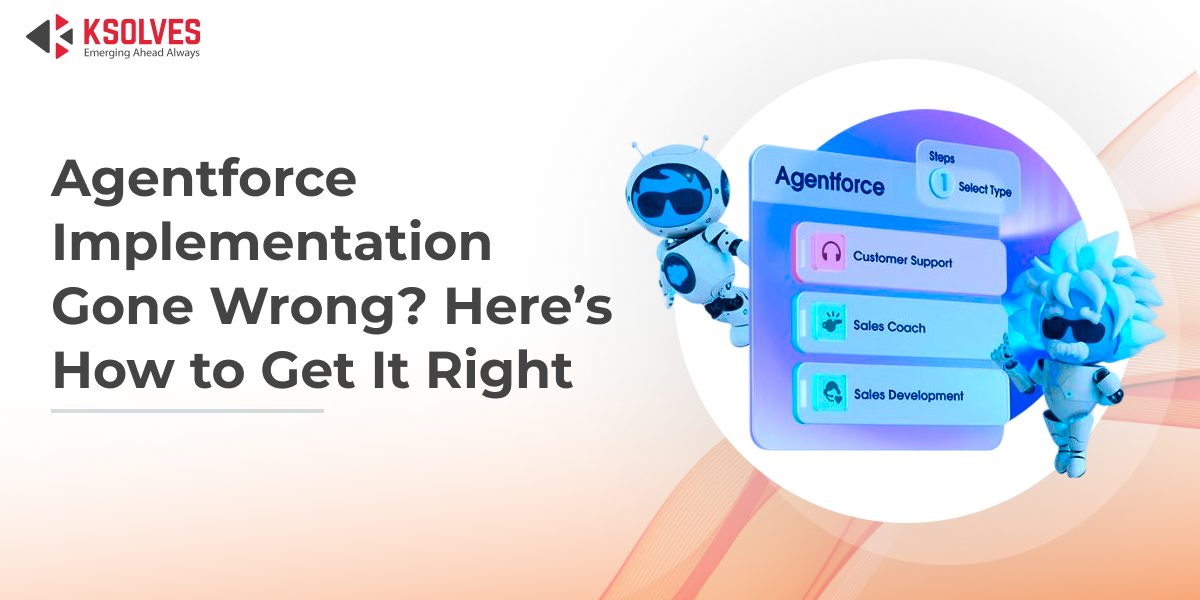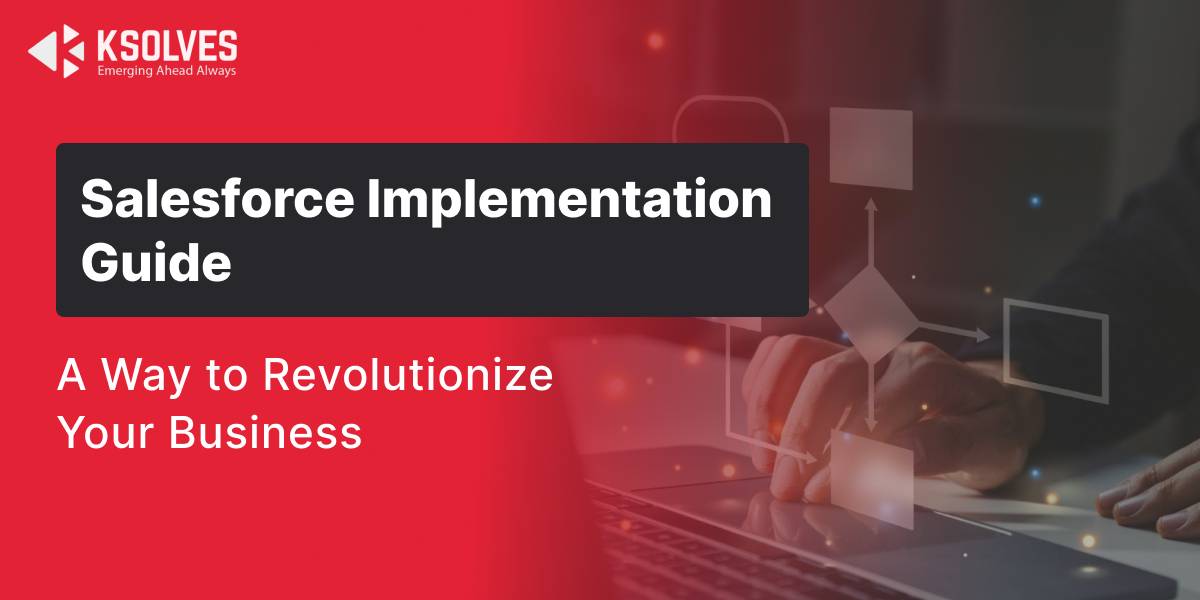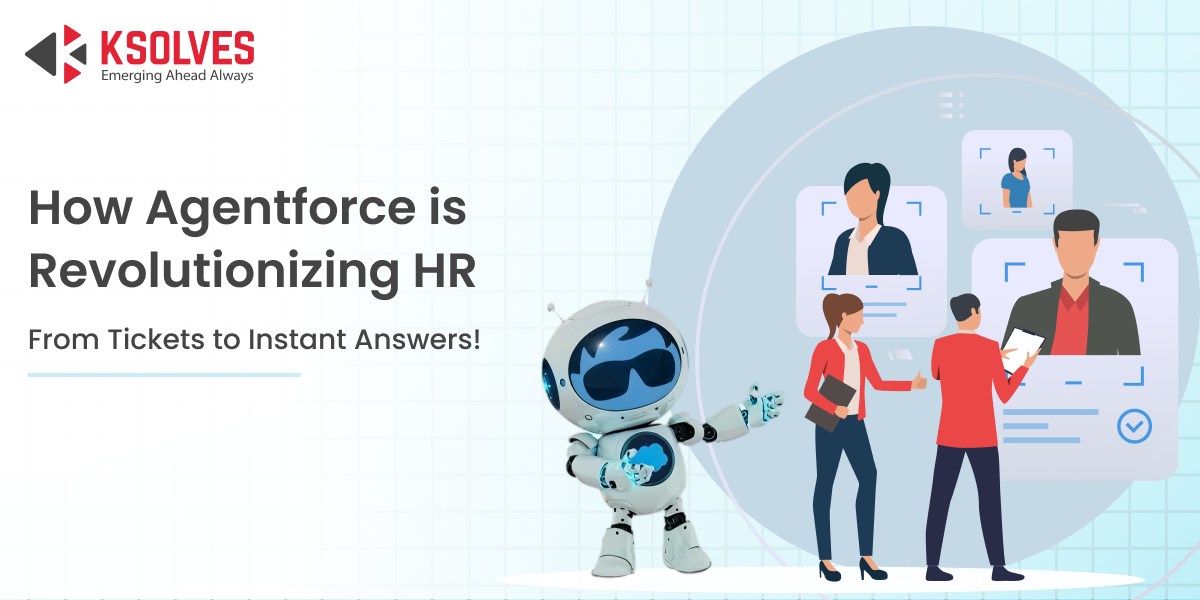Top Challenges in Agentforce Implementation and How to Avoid Them
Agentforce
5 MIN READ
July 21, 2025
![]()

Agentforce, Salesforce’s next-gen AI agent framework, is transforming how businesses interact with their CRM by automating tasks, enhancing user productivity, and unlocking deeper customer insights. As organizations increasingly adopt AI to streamline operations and improve decision-making, Agentforce stands out as a powerful tool for delivering intelligent, real-time assistance across departments.
However, like any advanced technology, the success of Agentforce depends heavily on how it’s implemented. A poorly planned rollout can lead to underutilization, integration issues, and missed business opportunities, ultimately affecting your return on investment.
In Marketing, this could mean failing to leverage customer insights for targeted campaigns. In Sales, it might result in missed automation opportunities that slow down deal cycles. Inefficient implementation of services can hinder case resolution workflows, ultimately reducing customer satisfaction.
In this blog, we’ll explore the top challenges companies face during Agentforce implementation and provide practical tips to help you avoid them. Let’s get started!
Key Agentforce Implementation Challenges and How to Overcome Them
Implementing Agentforce can unlock powerful AI-driven capabilities within your Salesforce ecosystem, but it’s not without obstacles. Below, we break down the most common Agentforce implementation challenges and how to avoid them for a smoother, more effective rollout.
Challenge 1: Misaligned Business Objectives
What happens:
Agentforce is often implemented as a standalone solution without aligning it to the broader goals of the business. This disconnect leads to unclear priorities, misused features, and minimal buy-in from end users.
Impact:
When Agentforce implementation doesn’t directly support strategic objectives, teams may resist adoption, and its potential is left untapped. As a result, organizations see low ROI, scattered workflows, and limited operational improvement.
How to avoid it:
Start with a cross-functional planning session involving stakeholders from sales, service, marketing, and IT. Clearly define business KPIs and map them to Agentforce’s capabilities. KPIs could include improving case resolution time, automating repetitive tasks, or surfacing deeper customer insights. A shared vision ensures that Agentforce works with your teams, not around them.
Challenge 2: Lack of Internal Readiness
What happens:
This is another Agentforce implementation challenge. Teams aren’t adequately trained or prepared to adopt AI-powered Agentforce agents. Without proper understanding and buy-in, users may distrust the system or continue relying on manual processes.
Impact:
Poor user adoption leads to frequent manual overrides, inconsistent usage, and wasted investment in the technology. The expected efficiency and automation benefits fail to materialize.
How to avoid it:
Invest in a structured change management plan that includes early engagement of key stakeholders to build support. Provide role-specific training and clear communication on how Agentforce implementation complements existing workflows rather than replacing team members. Preparing your teams thoroughly ensures smoother adoption and maximizes your return on investment.
Challenge 3: Poor Data Quality or Fragmentation
What happens:
Agentforce implementation relies heavily on the accuracy and consistency of existing Salesforce data to drive intelligent recommendations and automation. When data is fragmented across systems, outdated, or lacks standardization, Agentforce’s performance is severely compromised, leading to incorrect insights and ineffective processes.
Impact:
Inconsistent or incomplete data leads to broken workflows, flawed automation, and unreliable predictions. Users may lose trust in the system, and instead of enhancing productivity, Agentforce becomes a source of confusion or rework.
How to avoid it:
Conduct a thorough data audit before implementing Agentforce. Identify and eliminate duplicates, standardize formats, and fill in missing fields. Integrate siloed data sources and ensure your CRM is clean, complete, and ready to power automation. Investing time in data hygiene upfront will result in significantly smoother adoption and better decision-making downstream.
Challenge 4: Incomplete Integration with Existing Salesforce Stack
What happens:
Agentforce is sometimes implemented as an isolated layer without proper integration into the broader Salesforce ecosystem, including Sales, Service, and Marketing Clouds, or connected third-party tools. This creates silos that prevent Agentforce from accessing the full picture.
Impact:
Disconnected systems lead to duplicated work, inconsistent data across platforms, and limited automation. Users must manually toggle between tools, which increases friction and reduces productivity.
How to avoid it:
Prioritize a native integration approach from the outset. Ensure Agentforce seamlessly connects with your existing Salesforce Clouds, third-party platforms, and data pipelines. Use APIs, middleware like MuleSoft, and proper data mapping to create a unified, automated experience. When Agentforce is deeply embedded within your tech stack, it can deliver far more accurate insights and smoother workflows.
Challenge 5: Underestimating AI Governance and Compliance
What happens:
Agentforce’s AI components may be deployed without clear oversight of how data is collected, processed, or used, especially when involving sensitive customer or operational data. This lack of governance can expose businesses to compliance violations.
Impact:
Organizations risk falling afoul of data privacy regulations (like GDPR or HIPAA), face potential audits, and may lose stakeholder trust if AI outputs are seen as opaque or biased.
How to avoid it:
Establish a clear AI governance framework before rollout. Define ethical use policies, ensure data handling aligns with regulatory standards, and implement strict access controls. Regularly audit Agentforce’s actions, decisions, and data usage. Transparent AI governance not only ensures compliance but also builds user trust in Agentforce’s capabilities.
Challenge 6: Over-Customization and Feature Creep
What happens:
In a rush to maximize Agentforce’s impact, some teams attempt to customize too many workflows or deploy every feature at once, without sufficient planning or testing.
Impact:
This results in a bloated, complex system that’s harder to maintain, increases technical debt, and stretches project timelines. Users may become overwhelmed or frustrated, reducing adoption.
How to avoid it:
Begin with a minimum viable implementation focused on high-impact use cases. Roll out Agentforce in phases, gather feedback, and optimize based on real-world usage. This iterative approach allows your team to learn, adapt, and scale responsibly, without sacrificing usability or performance.
Challenge 7: Unrealistic Project Timeline
What happens:
One common pitfall is underestimating how long a successful Agentforce implementation really takes. Many teams expect immediate results without accounting for planning, testing, training, and phased rollouts.
Impact:
Rushing the process often leads to poor configuration, skipped testing, and half-baked integrations. This results in rework, user frustration, and missed goals, ultimately delaying the benefits Agentforce can deliver.
How to avoid it:
Plan your project realistically and align expectations early. Break your Agentforce implementation timeline into clear phases – discovery, setup, training, and post-launch support. For a practical breakdown, check out this detailed Agentforce implementation timeline guide to plan your rollout with confidence.
Bonus Tip
What happens:
Some businesses delegate Agentforce implementation to generalists or internal teams without specialized expertise. While this may seem cost-effective initially, it often leads to technical missteps, missed opportunities, and scalability issues down the line.
Impact:
Projects run into delays, require constant rework, and fail to unlock the full value of Agentforce. Lack of best-practice implementation can also result in poor user experiences and limited long-term adoption.
How to avoid it:
Work with a certified Salesforce Partner like Ksolves, known for its deep expertise in Agentforce consulting services. With 300+ certifications and a proven track record in Salesforce AI, Ksolves ensures your rollout is fast, future-proof, and aligned with your business goals. Partnering with the right experts saves time, reduces risk, and maximizes ROI.
Summing Up!
Agentforce has the power to redefine how businesses use Salesforce – unlocking automation, insight, and efficiency like never before. But realizing its full potential requires more than just enabling features; it demands alignment with business goals, clean data, strong integrations, and an experienced implementation partner. By avoiding these common pitfalls and embracing a thoughtful, phased rollout strategy, your organization can turn Agentforce into a strategic advantage rather than a technical experiment.
Ready to implement Agentforce the right way? Partner with Ksolves, your trusted Salesforce Summit Partner, to drive measurable impact from day one.
![]()







Author
Share with